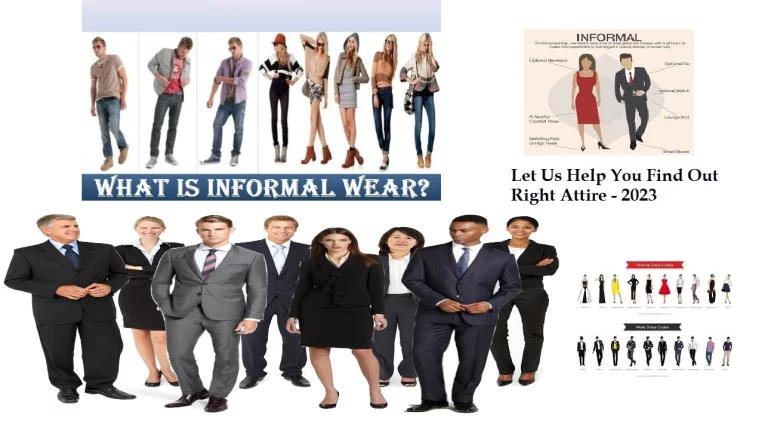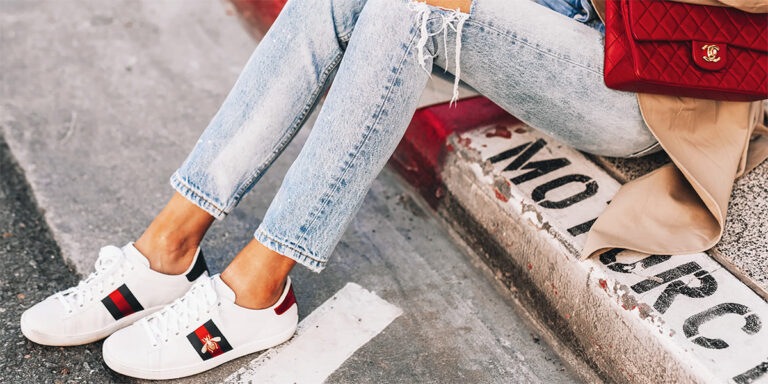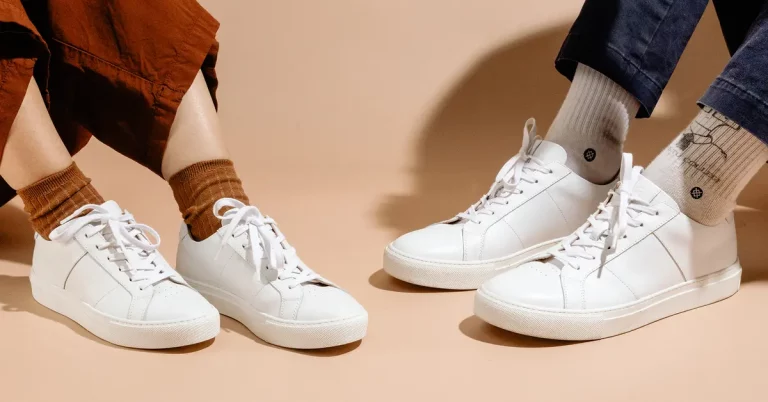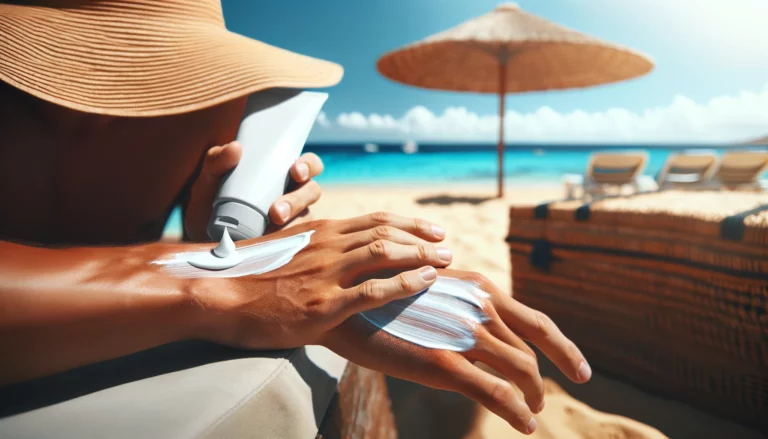80s Fashion: Trends that Defined the Decade!
The 1980s marked a revolutionary era in fashion, characterized by bold styles and distinctive aesthetics. This decade was a time when fashion trends diverged from the norm, embracing exuberance and self-expression. 80s fashion stood out for its vibrant colors, oversized silhouettes, and innovative designs, leaving an indelible mark on the fashion world. The impact of these styles was profound, influencing not just clothing but also the culture of the time. Even today, the legacy of 80s fashion continues to inspire and reshape modern fashion trends.
The Essence of 80s Fashion
The 1980s fashion scene was a blend of glamour and casual chic, characterized by iconic trends such as neon colors, shoulder pads, and hammer pants. These styles represented more than just aesthetics; they were a reflection of the cultural and social dynamics of the era.
Denim and leather jackets became staples, signifying a shift towards more relaxed and versatile attire. High-waisted jeans and oversized blazers were among the popular choices, reflecting a mix of comfort and style. This period also saw an upsurge in unique accessories like chunky bracelets, bold earrings, and statement sunglasses, further accentuating the distinctiveness of 80s fashion.
Key Elements of 80s Style
The 80s style was heavily influenced by the music and pop culture of the time. Icons like Madonna and Grace Jones not only dominated the music scene but also became style icons, inspiring fashion trends that resonated globally. The punk fashion movement, characterized by edgy leather dresses and heavy black eyeliner, gained traction, while the preppy look offered a more refined alternative.
Biker and Western fashion elements, including tights and mini dresses, added diversity to the fashion landscape. This era was a melting pot of styles, where street style met runway glamour, creating a unique silhouette that defined the fashion statements of the 80s.
07 Top Ranked 80s Fashion Trends
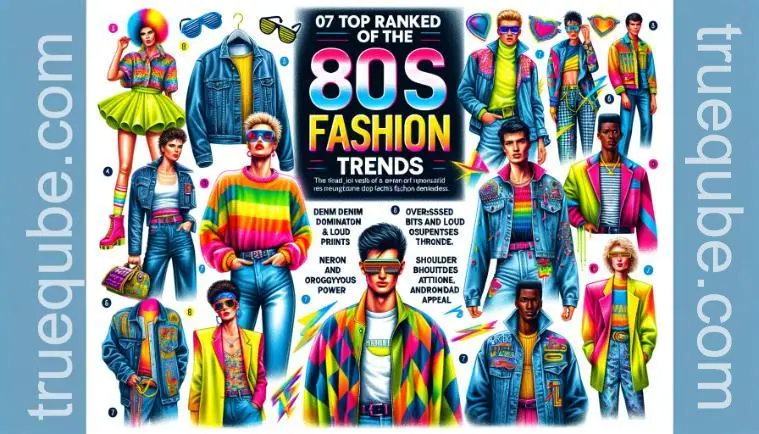
Denim Domination:
In the 1980s, denim was not just a fabric; it was a fashion statement. Acid-washed and ripped jeans broke the norms of traditional fashion, adding an edge to everyday wear. The high-waisted and baggy jeans were more than just comfortable, they were symbols of the relaxed yet chic style of the era. Denim transcended beyond pants, with denim jackets and skirts becoming wardrobe staples for both men and women. This trend was more than just clothing; it was about making a statement of individuality and freedom.
Neon Brights and Loud Prints:
The 80s were famous for neon colors and bold prints. Neon invaded wardrobes, bringing a pop of vibrancy to clothing and accessories. From hot pinks to electric blues, these colors were unmissable. Loud graphic prints and patterns were not just popular; they were a canvas for self-expression. This fashion trend was a rebellion against the mundane, a celebration of boldness and creativity.
Oversized Silhouettes:
Oversized silhouettes, especially with shoulder pads, defined the 80s fashion scene. These exaggerated shoulders gave a new dimension to oversized jackets and tops, creating a distinctive silhouette that was both powerful and stylish. This trend wasn’t just about size; it was about making a bold fashion statement.
Androgynous Attire:
The 1980s saw the rise of androgynous attire, blurring the lines between traditionally gendered clothing. Menswear and suiting for women became popular, showcasing a unisex style that was both elegant and empowering. This trend was a significant shift in the fashion world, promoting versatility and equality in fashion.
Shoulder Pad Power:
Shoulder pads defined the statement 80s silhouette. Blazers and coats began boasting extra broad padding, casting stronger shadow lines on jackets and overcoats. Suiting gained prominence amongst professional women, with “power dressing” meaning bold shoulders, cinched waists, and coordinating pieces emulating men’s suits.
The power suit spawned many variations – leather, wool, and other heavy fabrics conferred authority. Typically neutral-hued or pastel, they allowed bright accessories to pop against an elegant backdrop. The style iconified women’s growing societal power.
Neon and Loud Attitude:
Reflecting the loud and bold attitude of the 80s, bright neon clothing became a staple. These neon colors were not just eye-catching but also a mode of self-expression, echoing the era’s vibrant energy. Bold graphic prints further emphasized this trend, making a loud statement in the fashion world.
Androgynous Appeal:
The androgynous appeal in the 1980s was groundbreaking. Inspired by icons like Grace Jones, menswear and power dressing for women gained immense popularity. This trend was about challenging norms and embracing a new era of fashion that celebrated individuality and strength.
Fashion Icons of the 80s
The 1980s were a defining era for fashion, with icons like Madonna, Grace Jones, Brooke Shields, Joan Collins, MC Hammer, Princess Diana, Jane Fonda, and Yves Saint Laurent reshaping fashion trends and mainstream styles. Madonna’s bold and edgy style, characterized by lace dresses, heavy black eyeliner, and chunky bracelets, became a symbol of female empowerment and self-expression. Grace Jones, known for her androgynous and avant-garde look, challenged gender norms and influenced punk and preppy fashion.
Brooke Shields popularized denim with her iconic Calvin Klein jeans ads, making ripped jeans and acid-washed jeans a staple of street style. Joan Collins in “Dynasty” brought back glamour with shoulder pads and power suits, signifying the era’s style inspiration. MC Hammer’s hammer pants and bright, baggy outfits became synonymous with 80s style, merging hip-hop culture with mainstream fashion.
Princess Diana’s elegant and approachable style, including chic little black dresses and oversized blazers, set a new standard for royal fashion. Jane Fonda’s workout videos not only promoted fitness but also popularized athleisure wear like tights and leotards. Yves Saint Laurent, a renowned fashion designer, continued to influence high fashion with his innovative designs and runway shows.
Each of these icons left a lasting impact, defining iconic 80s fashion moments and inspiring generations to come with their distinctive and influential styles.
80s Fashion in Modern Times
The influence of 80s fashion remains strong in modern times, as contemporary designers often draw inspiration from the bold styles of that era. Elements like neon colors, shoulder pads, and oversized silhouettes have made a significant comeback in recent fashion trends.
Today’s interpretation of the 80s style blends original elements with modern sensibilities. For instance, high-waisted jeans have returned, but in more refined and diverse styles, suitable for various body types. Oversized blazers have also made a return, often worn with a modern twist, like pairing them with slim-fit trousers or mini dresses.
The resurgence of neon and loud prints reflects a renewed interest in the playful and vibrant aspects of 80s fashion. Contemporary fashion embraces these elements, often incorporating them into streetwear or high-fashion collections.
Furthermore, the androgynous looks and power dressing of the 80s, initially popularized by icons like Grace Jones and Princess Diana, have influenced today’s gender-fluid fashion trends.
The revival of 80s fashion in modern times is not just about replicating past trends; it’s about reinterpreting them to fit the current cultural and aesthetic contexts, showcasing how past styles can evolve and remain relevant in the ever-changing world of fashion.
80s Fashion Across the Globe
80s fashion was a global phenomenon, influencing and being influenced by various cultures around the world. Japanese fashion in the 80s, for example, was marked by innovative designs and technology-infused fabrics, contributing significantly to the fashion world. Designers like Yohji Yamamoto and Rei Kawakubo introduced a minimalist and avant-garde aesthetic that contrasted sharply with the typical bright and bold 80s style.
In France, Yves Saint Laurent and other French fashion designers continued to influence high fashion, bringing elegance and chicness to the runway. Their designs often included lace dresses, leather jackets, and sophisticated silhouettes, reflecting a more refined aspect of 80s fashion.
American fashion brands played a key role in popularizing casual wear, making denim, t-shirts, and sneakers fashionable. This laid-back style, which included acid-washed jeans and leather dresses, became a staple not only in America but worldwide.
Furthermore, the Ivy League fashion of the 80s, characterized by preppy and clean-cut styles, was another trend that gained popularity across different cultures, influencing a more conservative yet stylish approach to everyday wear.
The global impact of 80s fashion is a testament to its versatility and ability to resonate with diverse audiences. The era’s fashion trends were not confined to one region; they were a collective movement that shaped the fashion era, leaving a lasting legacy in the history of fashion.
Accessory and Beauty Trends
In the 1980s, accessories and beauty trends were as bold as clothing. Statement jewelry like chunky bracelets, oversized earrings, and belts became crucial to defining a look. These fashion trends went beyond mere adornments; they were expressions of personality and style.
Hair clips and scrunchies were not just practical; they were fashion statements, often matched with the outfit’s color palette. Heavy makeup, characterized by bright eyeshadow, blush, and lipstick, was the norm. Hairspray hairstyles, including big perms and mullet cuts, completed the quintessential 80s look. This era’s beauty trends were about making a bold statement, reflecting the fashion era’s vibrant and dynamic spirit.
80s Fashion Legacy and Its Resurgence
The legacy of 80s fashion is undeniable in modern design. Today, elements of the 80s style, such as bright neon colors, shoulder pads, and power suits, have resurfaced with a contemporary twist. Designers are reinterpreting 1980s outfits, blending them with current trends to create new looks.
The resurgence of these styles speaks to the 1980s’ significant influence on the fashion world. Contemporary designers are drawing inspiration from the bold aesthetics of the 80s, infusing their collections with a sense of nostalgia yet keeping them fresh and relevant.
High-waisted jeans, once a staple of the 80s, have made a comeback in various modern styles, and oversized blazers have been reimagined for today’s fashion-forward crowd. This blend of past and present showcases the enduring appeal and versatility of 80s fashion.
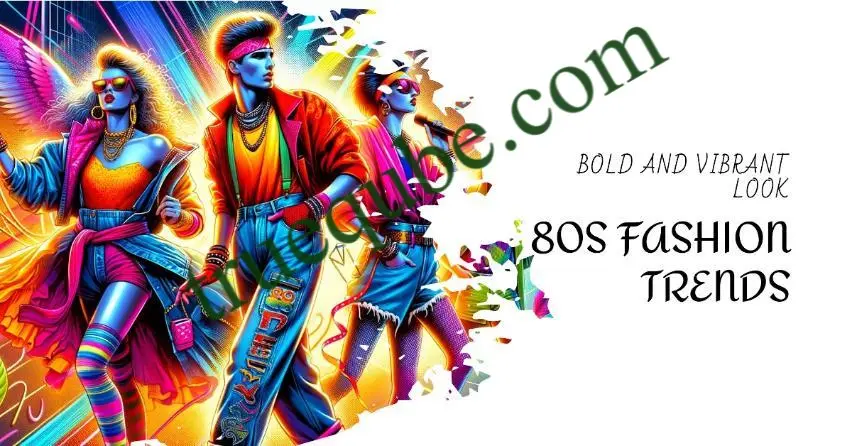
Wrapping Up
The 1980s, a decade marked by classic 80s charm, created an iconic fashion era still revered in 2023 for its eclectic originality. Power dressing, wild prints, neons, and experimental hair, influenced by celebrities like Madonna and 80s rock fashion, represented cultural shifts towards greater freedom of expression.
By borrowing elements from contrasting influences like Japanese minimalism, emblematic of Japanese fashion, British punk, and American prep – reminiscent of Ivy League fashion, mainstream 80s fashion nurtured diversity in culture and fashion.
This vibrant era, known for its iconic 80s fashion trends, continues inspiring designers and wearers globally, proving its resonance with popular trends. Though reinterpreted in contemporary contexts, quintessential denim skirts, shoulder pad blazers, and acid-washed jeans serve as a glitzy reminder of fashion’s bygone golden age.
The resurgence in modern runways and street style, influenced by trends from the 1980s and 90s fashion, showcases a blend of classic and casual wear.
French fashion also plays a role in this revival, contributing to the history of fashion with its timeless elegance. American fashion brands have adopted and adapted these trends, ensuring that the spirit of the 80s remains alive and well in today’s fashion landscape.

